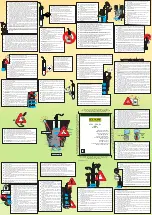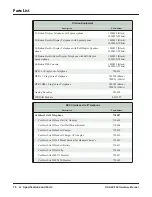
012696 GL0011P-07
– Installation Guidelines for BioDisc BA, BAx, BB & NB Units
Page 9
2.4.2
Connect the inlet and outlet pipework when safe access can be gained. Short lengths of “rocker” pipe
with flexible joints should be used adjacent to the unit to allow for any minor differential movement.
Units with integral discharge pump have a 1¼ inch BSP threaded spigot outlet.
2.4.3
Check the cables attached to the Control Panel and drill the corresponding number of 40mm holes in
the BioDisc case, 100mm below ground level and adjacent to one end of the baffle supporting the
Motor/gearbox. Units with an Integral Discharge Pump require an additional hole, 100mm below
ground level, diameter to suit the conduit to be used.
2.4.4
If an Independent Loss of Rotation Alarm and/or High Level Alarm are to be fitted, each will require a
hole to suit the conduit or cable to be used. Seal the holes after inserting cables.
2.4.5
Erect the Control Panel as described in Section 3.
2.4.6
Continue to back-fill, with concrete (wet site) or free flowing granular material (dry site), up to ground
level. The finished surface should be 95 mm minimum lower than the lip of the cover.
2.4.7
Important: Read section 7.1.4 regarding delayed electrical installation
.
3
Installation of the Capacitor
On all new BA and BB BioDisc the capacitor needs to be wired into the motor as well as the supply voltage
being wired into the unit.
1. Before wiring the Control Panel
to the terminal box marked ‘Motor Capacitor’ you need to remove the
four screws from the terminal box on top of the motor.
2. Remove the terminal box cover.
3.
Feed the cable from the ‘Motor Capacitor’ box through a suitable M20 gland and fix the gland to the
terminal box.
4.
Wire the cable from the ‘Motor Capacitor’ box to the terminals following the markings on the cable.
(green & yellow to E, blue to Z2, red to U1 and white to U2)
5. Replace the cover on the terminal box on the motor.
6. Tighten the cable gland to ensure no moisture can enter the terminal box.
7. Wire the terminal box cable to the control panel as described in the next section.
4































